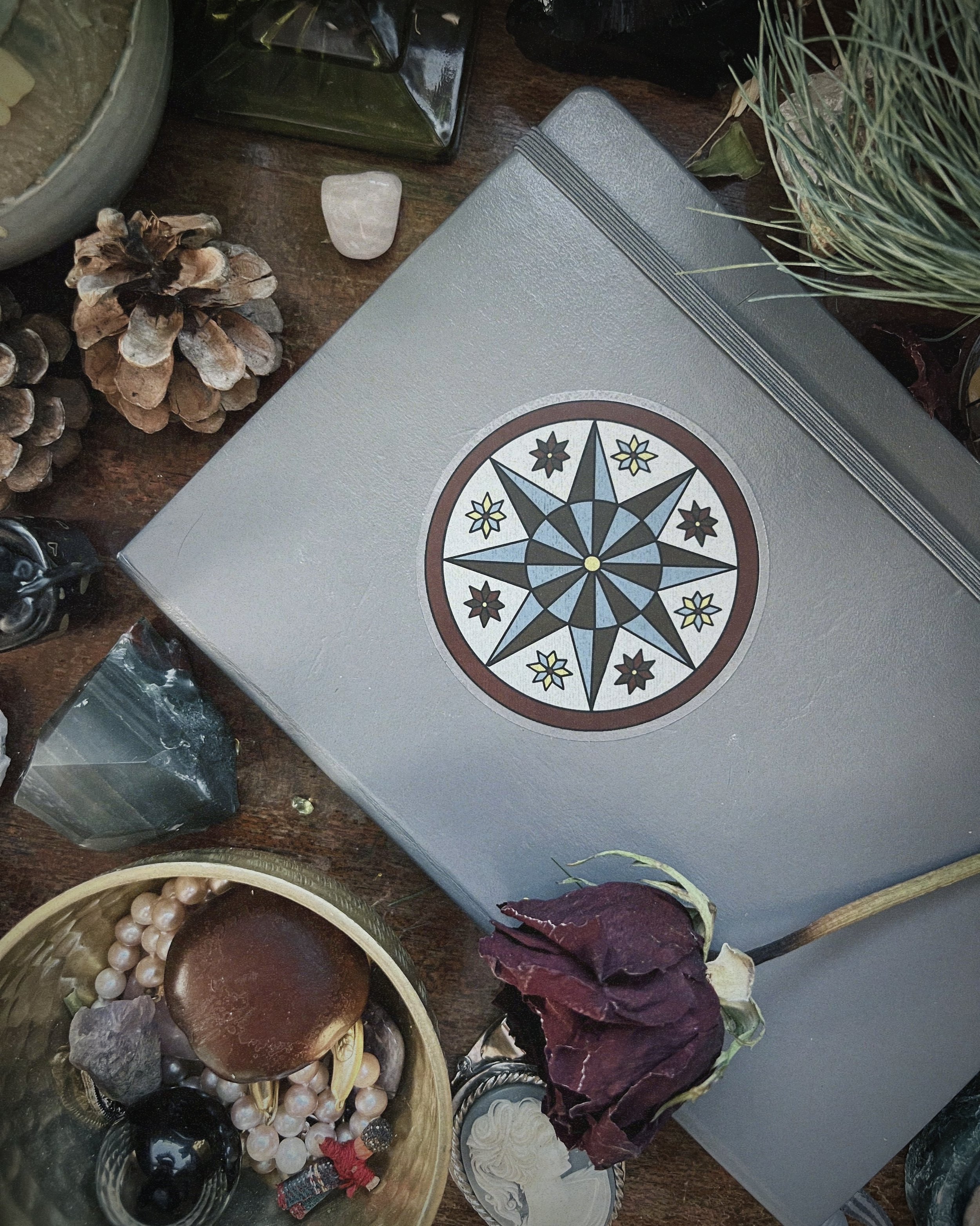Hex signs
Follow: Instagram | TikTok | Facebook | Shop | Etsy | PatreonNote: This article was originally published by @gritchenwitch on Instagram. To learn about me and my practice, including more info on folk witchcraft, mountain magic, knot work, and hearthcraft, please visit gritchenwitch.com or join my Patreon at patreon.com/gritchenwitch.
Hex signs are a beautiful form of folk art loaded with symbolism.🌞
Made famous by the PA Dutch in rural Pennsylvania, they’re most frequently painted on barns and sheds, but may also be carved into furniture, sewn into textiles, and formed into jewelry. Like any talisman, they can be designed using a number of correspondences, but there are usually several traditional symbols involved. These often include stars and flowers arranged in patterns for love, luck, and protection.
Another popular design is known as the distelfink, or “thistle-finch.” Created as a stylized goldfinch, it serves to attract happiness and luck. It’s also a mainstay of fraktur, another beautiful form of folk art from the PA Dutch. While it started as a gothic script, it evolved into an elaborate form of illumination that was not only used decoratively around the home but also ornamented marriage certificates, house blessings, bookplates, etc.
Hex signs are also sometimes paired with white arches over doors, which tricked witches into bumping their heads as they attempted to enter.
In case you missed my post on Schnitz Pie, “Pennsylvania Dutch” refers to both the people that settled in this area as well as the dialect they spoke. They referred to themselves as Deitsch, from the German Deutsch, which evolved into Dutch. They were Lutheran, Reformed, and Catholic as well as Anabaptist (e.g. Amish and Mennonite). Hex signs, however, were not utilized by the old order groups, and instead were employed by the “Fancy Dutch” (as opposed to “Plain Dutch”) who didn’t observe the more conservative practices.
I designed two traditional hex signs—a distelfink and an eight-pointed star. While the distelfink draws love and luck, the star acts as a protective charm. Since they’re clear-backed, they look super pretty wherever you decide to place them. Anyone who’s a patron during the month of March will be able to choose their favorite as a spring gift. As always, I’m so grateful for your support!🖤
Additional photos from the Glencairn Museum.




